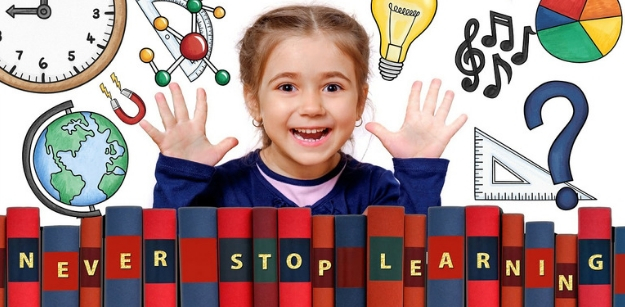Specific characteristics make up a good learner, but people are not born with motivation or aptitude. Children are not born with those fixed traits. Personality plays a significant factor, but unless fostered with positive stimulation, an overall positive disposition is not enough.


Academic growth is not only for the classroom. Teachers are part of the dichotomy, but it is not the entire picture. Learning begins and ends at home.
Leave Room for Reading
Reading is a skill people continue to improve throughout their lifetime. However, without the right motivators, it is not automatic.
Learning how to read helps a child’s brain develops to grasp communication and process concepts. A well-formed vocabulary is vital for excelling in every subject manner.
Filling a space with reading is creating a world for a child to learn. Sharing in reading is the ideal way to prove to a student; it is critical to their education. Carving out a short window every day to read with a child using novels, magazines, posters, and even video games create an inclusive, creative environment.
The addition of fun activities makes it feel like a game rather than studying. However, developing study skills is a bonus when including reading.
Opening Communication
Two-way communication is a hard task when the hustle and bustle of daily routine take up the majority of the time. However, validating a student’s opinions and feelings goes a long way to leading them to learn.
Good learners benefit from knowing their opinion matters and traveling the academic road without judgment. If they feel ignored or looked down upon, a child is likely to disengage and insulate.
Children’s Interests Are Important
Making a fun environment to learn spurs a child to approach the process with a different attitude. Encouraging a student to read and conceptualize topics that interests them creates a good learner. For example, if a child enjoys dinosaurs, explore and engage books, materials, and video games that are topic focused. Learning exercises become a joyful experience rather than forced.
Learning Styles And Studying
Learning styles differ from student to student. The approaches are unique and well researched.
Seven Learning Styles:
● Verbal – Verbal learning style encompasses both speaking and written language. Students who thrive using this method enjoy the reading and writing skill sets. The use of the verbal learning style means teaching concepts that include discovering new concepts through reading and using composition lessons to further knowledge in that area.
● Physical – Utilizing touch and physical activity in the physical learning style includes sports, hobby-related activities, and tactile and focuses on the World around a student. For instance, taking apart a complicated mechanism and reassembling them brings joy and excitement to learning
● Visual – Images, color, objects, and maps give a visual learner a better grasp of new concepts. It is different than physical because it focuses in on the special sense of a learner rather than tactile. Drawing and doodling are ways that visual learners stay on top of different subjects that do not rely on visual stimuli.
● Auditory – Auditory learners focus in on the sound and learn from repeating or speaking about concepts. The sense of hearing sparks interest and assists in understanding a new subject. Music, videos, and recorded lectures create an easier learning space.
● Logical – The logic style of learning has roots around mathematics. Patterns, calculations, and lists allow for a systematic way of learning. Students that excel in math are natural, logical learners. Procedures and ranking systems are ways logical learners remain proficient in different subjects.
● Social – Verbal and non-verbal cues are how social learners approach new concepts. Students who are social learners excel in classroom settings and benefit from working in groups. Study groups and sports are ways a social learner approaches the World around them.
● Solitary – Everyone knows a child with an independent streak. Students who learn through private and introspective means are the beneficiaries of the individual learning style. However, given the trends in academia, it is not always the way a classroom teacher approaches teaching. Diaries and journals are a way teacher, and parents assist in teaching a child who prefers to learn in a secluded setting. Tutoring services like Tutor Gold Coast focuses on one-on-one learning that helps all areas of study.
The combination of learning styles is the norm in academia. However, some students develop an understanding with a mix of techniques. Trial and error is often the only way to decipher, which is best.
Enthusiasm For Learning
Children mirror the attitudes of their teachers, both at home and at school. If a learner witness enthusiasm in the adults around them, they reflect the same attitude when learning. Discoveries should induce excitement for both the learner and the teacher.
Gaining Knowledge Through Gaming
The new, trending way to learn is game-based. Exciting and entertaining a student is easier when using games as a tool. Developing non-cognitive skills and learning beyond the surface helps with motivation and engagement in children.
The expansion of a game-based system is also the introduction to team-based learning. If learned as an early education concept, a classroom environment is a more natural transition when the times comes. Course work is boring and monotonous, but with the introduction of games, a student tries harder and apt to work more diligently with other students to grasp and conquer a concept.
Gamification and point systems bring students together. Socializing is a byproduct of using a game-based curriculum. Though, a child does not have to be at school to understand teamwork. Learning platforms across the Internet continues to expand to introduce collaboration.
Studying Based On Strengths
A student who struggles academically does not mean they are unable to learn. Finding strengths and focusing on emotionally healthy ways for them to excel academically creates a better atmosphere for overcoming difficulties in grasping their schooling.
The opposite is also exact. If teachers focus in on a student’s weakness, it causes a lack of desire, distress, and discouragement in their education. Rather than focus on the failure of a test, praise for the subjects the student is excelling in and the progress made in the areas they struggle.



